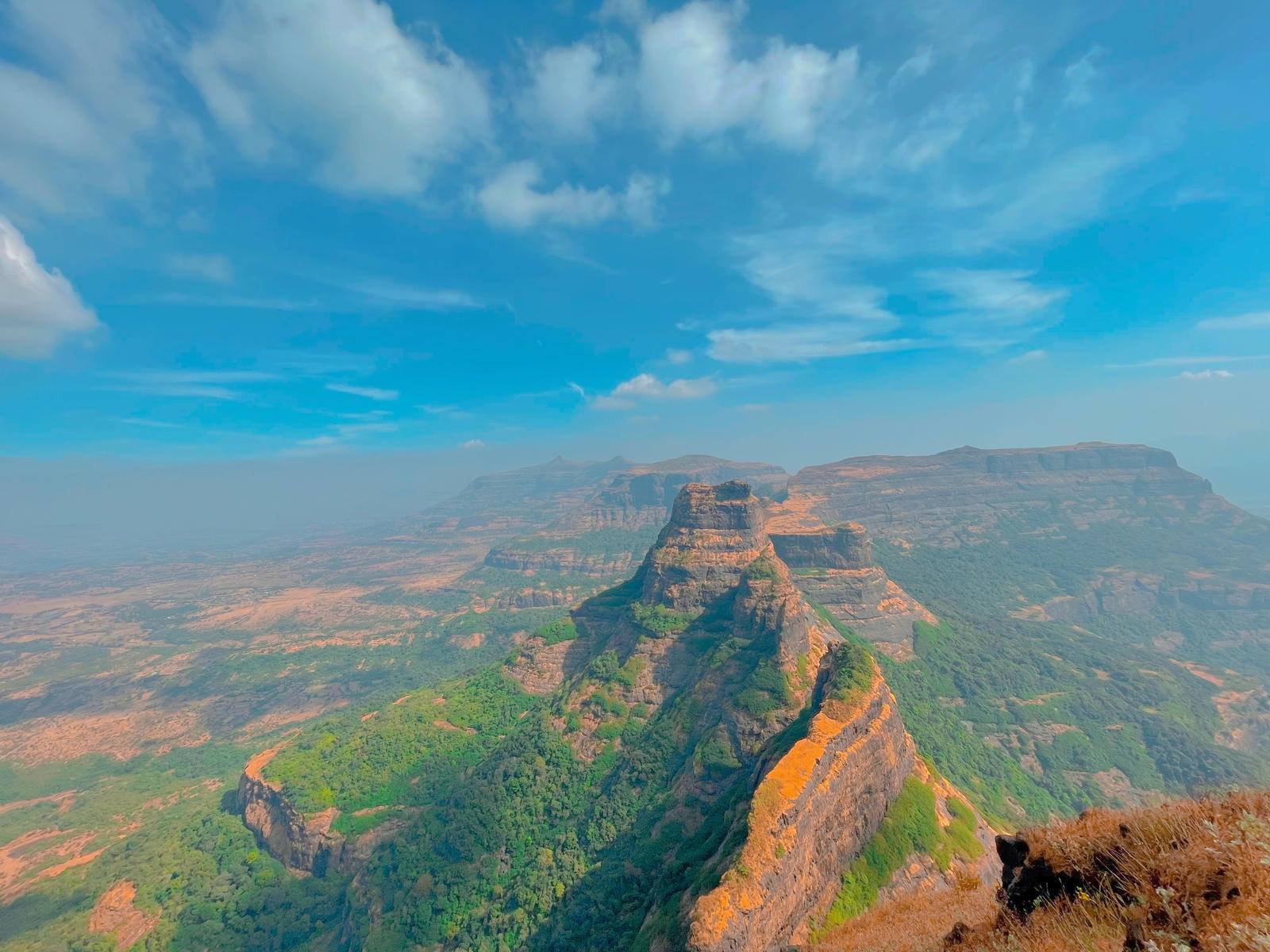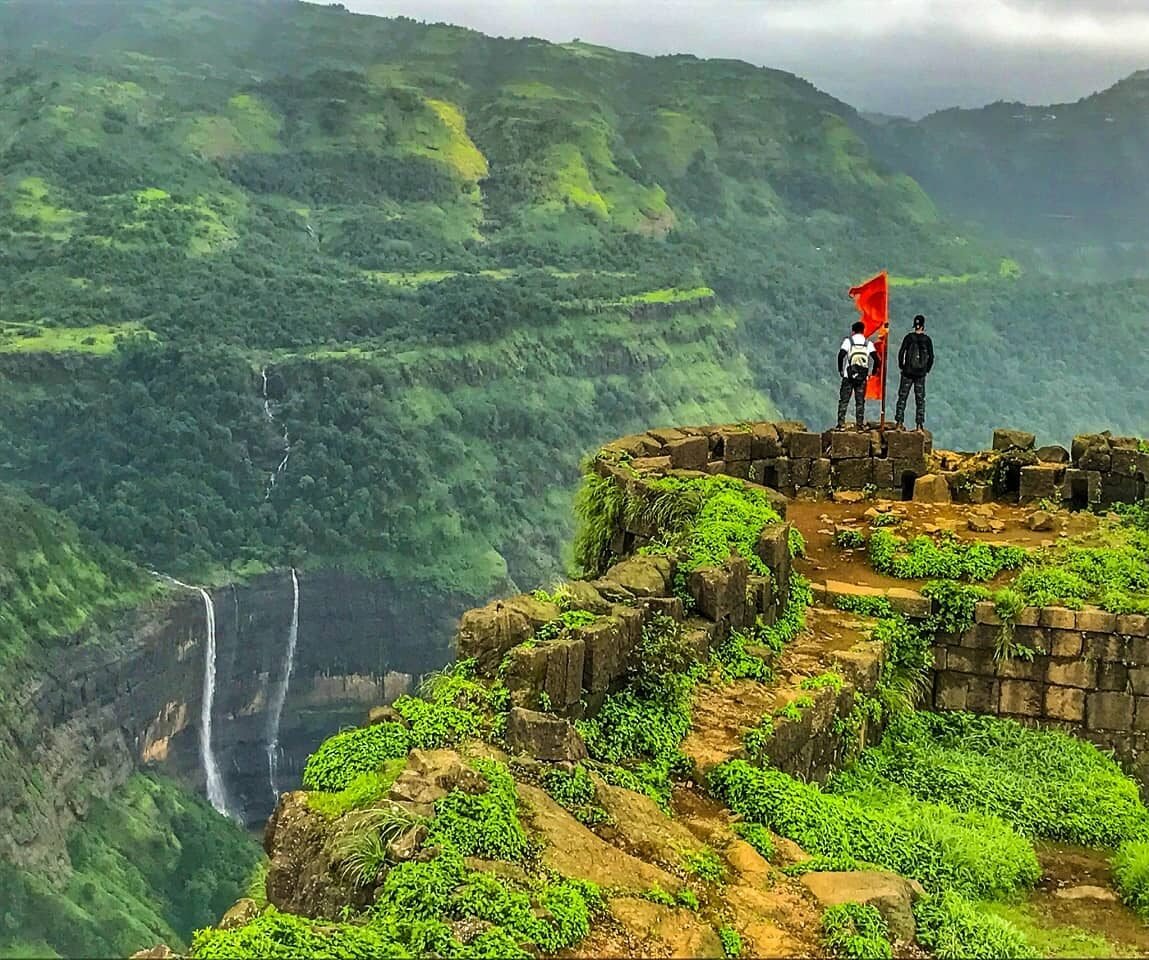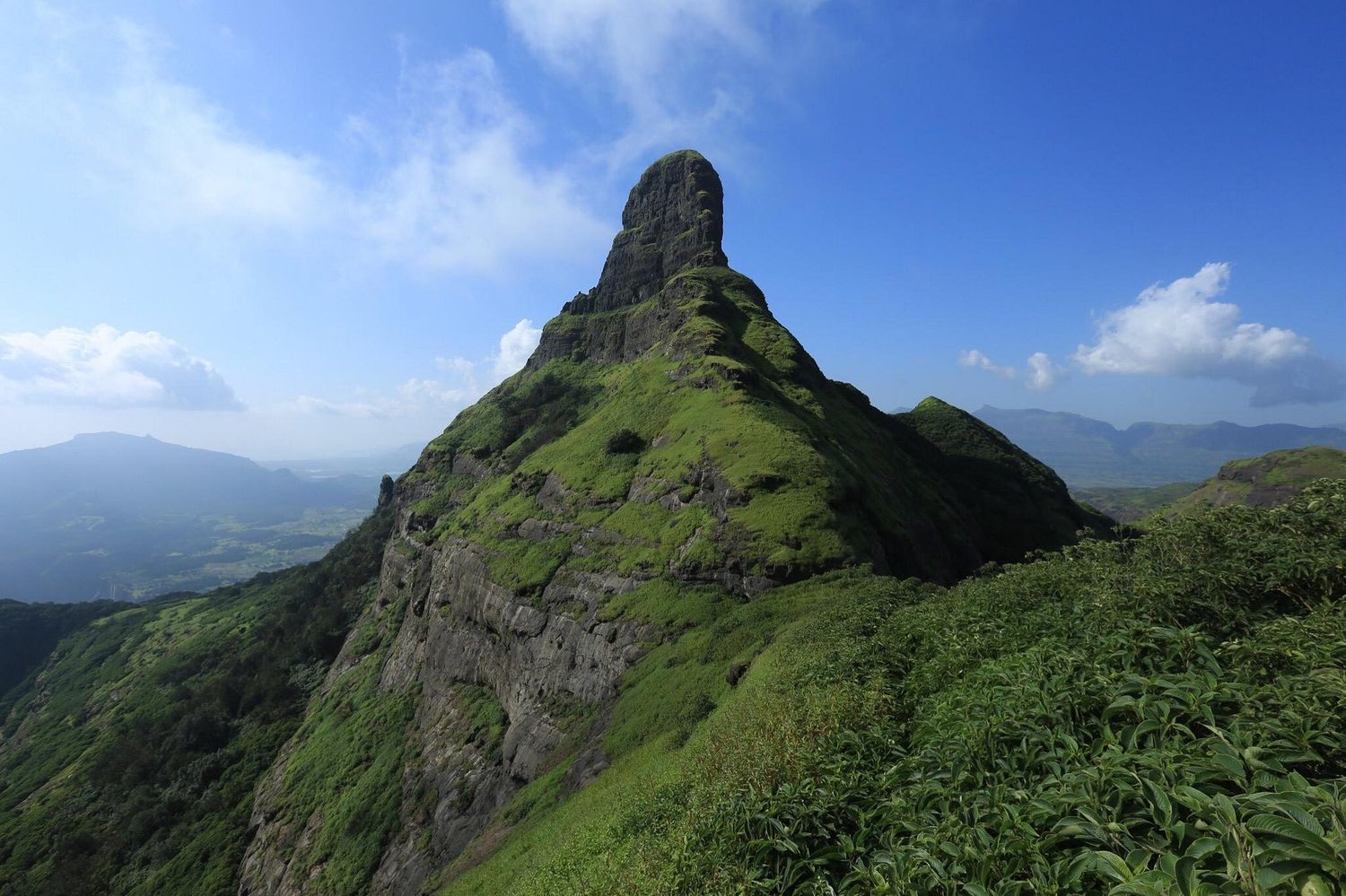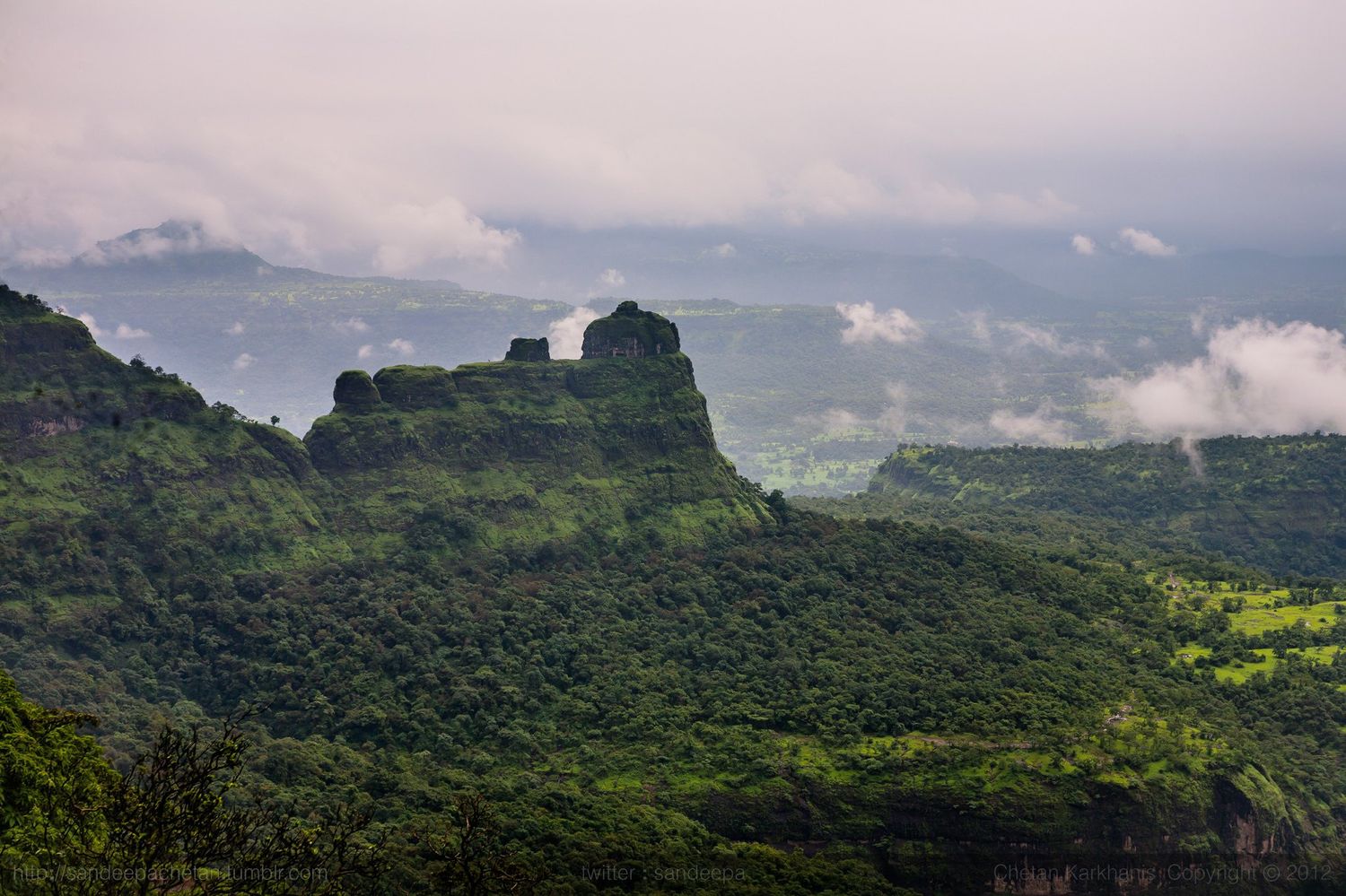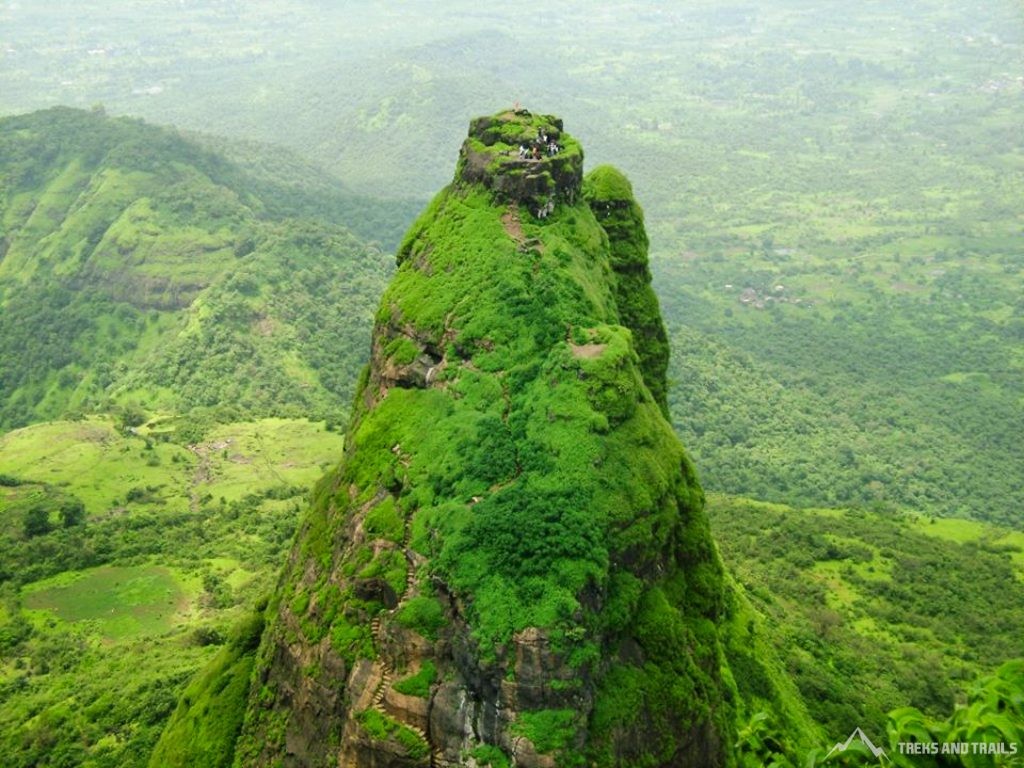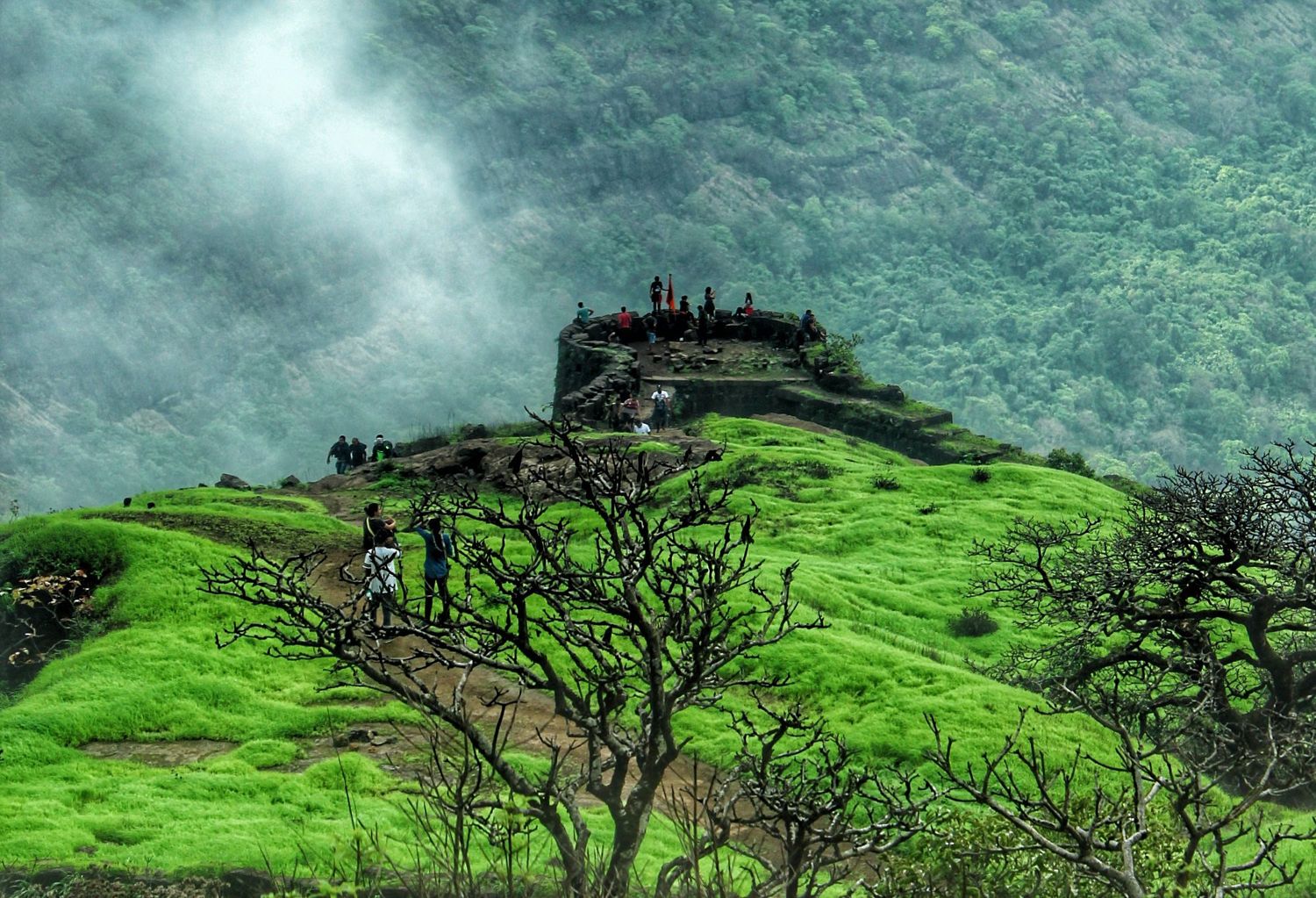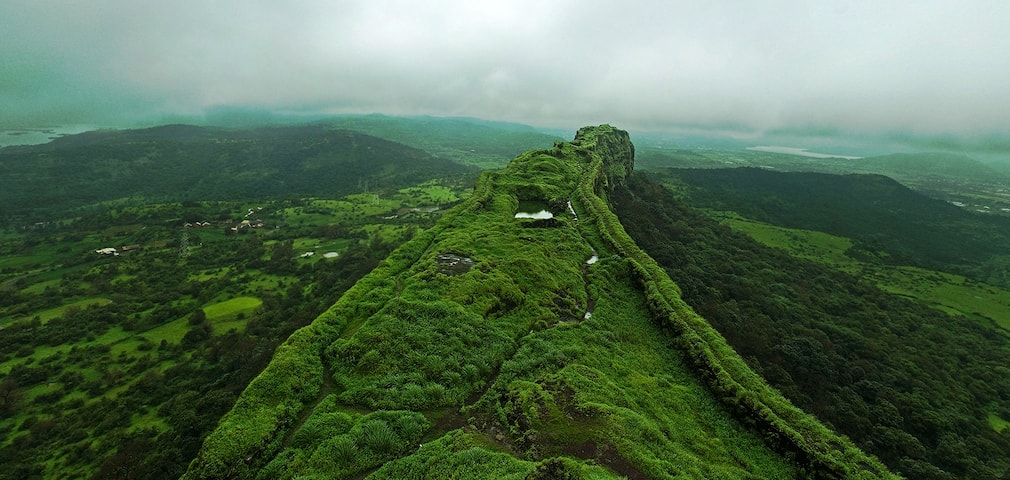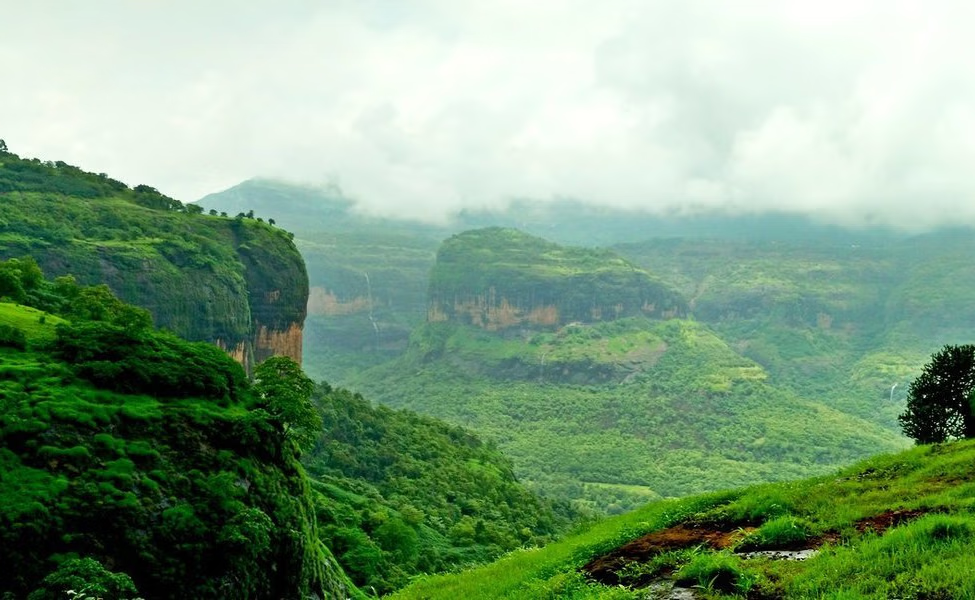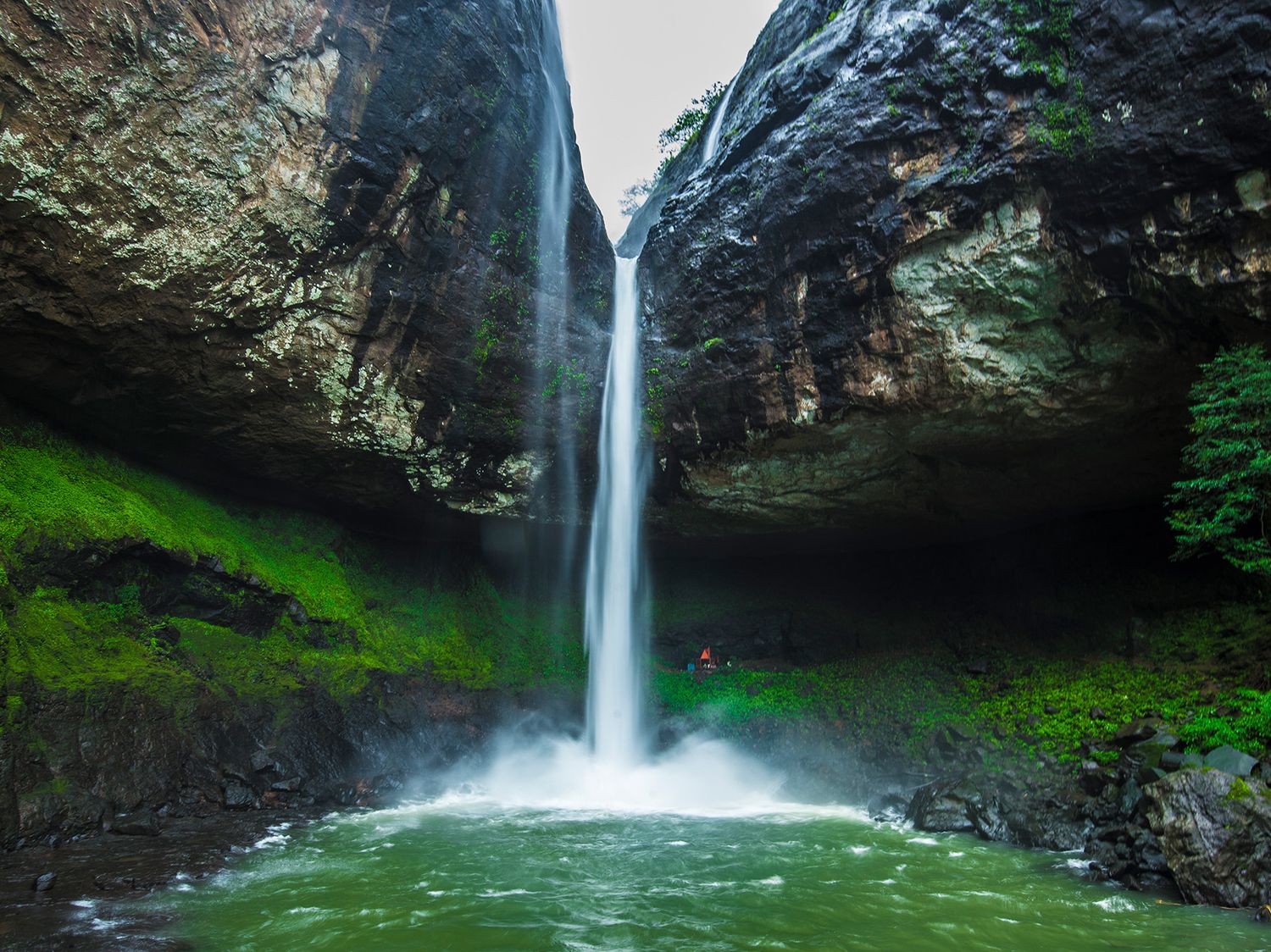Alang–Madangad–Kulang Trek: The Toughest Sahyadri Challenge
The Alang–Madangad–Kulang (AMK) trek is widely regarded as the most difficult and thrilling trek in the Sahyadris. Situated in the Kalsubai range of Maharashtra, this trek involves climbing three massive forts—Alang, Madangad, and Kulang— each perched at nearly 4,850 ft. The trail is known for its sheer rock patches, steep ascents, rappelling sections, and exposed traverses, making it a real test of endurance, skill, and courage. For those who dare, AMK offers caves for night stays, breathtaking views of the Sahyadris, and a once-in-a-lifetime adventure.
The Sahyadri’s Most Challenging Trek
Unlike regular treks, AMK requires technical skills in rock climbing and rappelling. With rock patches over 50–60 feet high and narrow ridges connecting the forts, the trek demands fitness, experience, and proper gear. It is not recommended for beginners but is a bucket-list trek for seasoned trekkers.
Cultural and Historical Importance
These forts once served as strongholds in the Maratha empire. The caves, water cisterns, and fort walls still stand as remnants of their history. The caves on Alang and Kulang forts are popular overnight shelters for trekkers.
Highlights of the Trek
- Technical climb with rappelling and exposed traverses
- Ancient caves and water cisterns for camping
- Stunning views of Kalsubai, Ratangad, and Harishchandragad
- Combination of three forts in one trek
- True adventure for experienced trekkers
